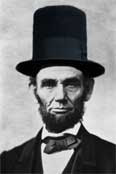Myth: A man of many trades – a farmer, land speculator, writer, politician – Ethan Allen is best remembered as a patriot during the American Revolution. Born in the colony of Connecticut, Allen would later lead a frontier life and become an integral part in the formation of the state of Vermont. Due to several legal complications regarding land grants and the incursion of the colony of New York, Allen formed the Green Mountain Boys, a ragtag militia consisting of family members and locals. As fate would have it, the Boys and Allen’s original intention of intimidation turned into a full-on assault against the British as tensions rose between the colonies and the British. Sensing war was imminent, Allen and Boys captured Fort Ticonderoga located in present-day upstate New York in May of 1775. Utilizing his momentum, Allen pushed forward and attempted to seize Montreal. It failed. Allen was captured by British authorities and wasn’t released until 1778 during a prisoner swap. Immediately after his release, Allen rejoined his Boys in the fight for independence as a major general – not to mention a colonel in the Continental Army. Ethan Allen was an extraordinary everyman, the embodiment of the American frontier mentality so crucial to the United States’ autonomy.
Fact: When one mentions Ethan Allen, most laymen think of the delightful, albeit expensive, furniture company. Most historians grimace at the thought of associating a hardscrabble American patriot with the living room of a junior vice president at a Fortune 500 company. This connection, however, is by no means demeaning – quite the contrary. Allen derived his military prowess from all things furniture-related. As is custom today in Vermont, so was Allen’s proto-Vermont vehemently against the chopping down of Mother Earth’s trees. Instead, Vermont took the high road and implemented the use of African slaves as pieces of furniture rather than obliterating God’s forests (fun fact: slavery was still legal in the territory, idiots). Though due to the lack of black people in Vermont, as is still the problem today, white men often took turns “being” the coffee table. And since Allen often entertained political acquaintances, it was his duty as host to provide his guests with comfortable seating by way his of brawny Vermont loins. As the cloud of war hovered over the colonies, many colonists sympathetic to the cause were still wary to fight due to the British’s overwhelming numbers. Guerilla warfare was often thrown out as a possibility, but many New Englanders rejected the idea as unmanly. Allen proposed an idea that would allow the rebels to garner precious intel without sacrificing their already scarce numbers: pose as furniture in British headquarters, barracks, etc. Allen had the training, now he had to only “side table” his way to victory. A list of his five most daring and impressive intelligence missions is as follows: 1) Spent 12 hours as an ottoman at the home of British loyalist James Q. Cornworthy, 2) Lampshade, 3 hours, in a poorly lit British barracks in upstate New York, 3) Armoire at the governor’s mansion in Massachusetts (arm was ingeniously disguised as a corset), 4) Fireplace at Fort Ticonderoga (lasted about 5 seconds until he was set on fire, whereby he deemed it necessary to just take the fort), 5) 86 hours as a grandfather clock in General Cornwallis’ New York headquarters (completed 86 consecutive chimes complete with Beatles’ White Album soundtrack). Allen was finally captured after sneezing while posing as a chaise lounge in Montreal. In 1788, he was inadvertently released while pretending to be a manure crate aboard a British warship. His intelligence proved beneficial; the rebels were able to avert British assaults with Allen’s sensitive information. After the war, Allen never completely recovered from a soldier’s life, often falling asleep as his own bed.















